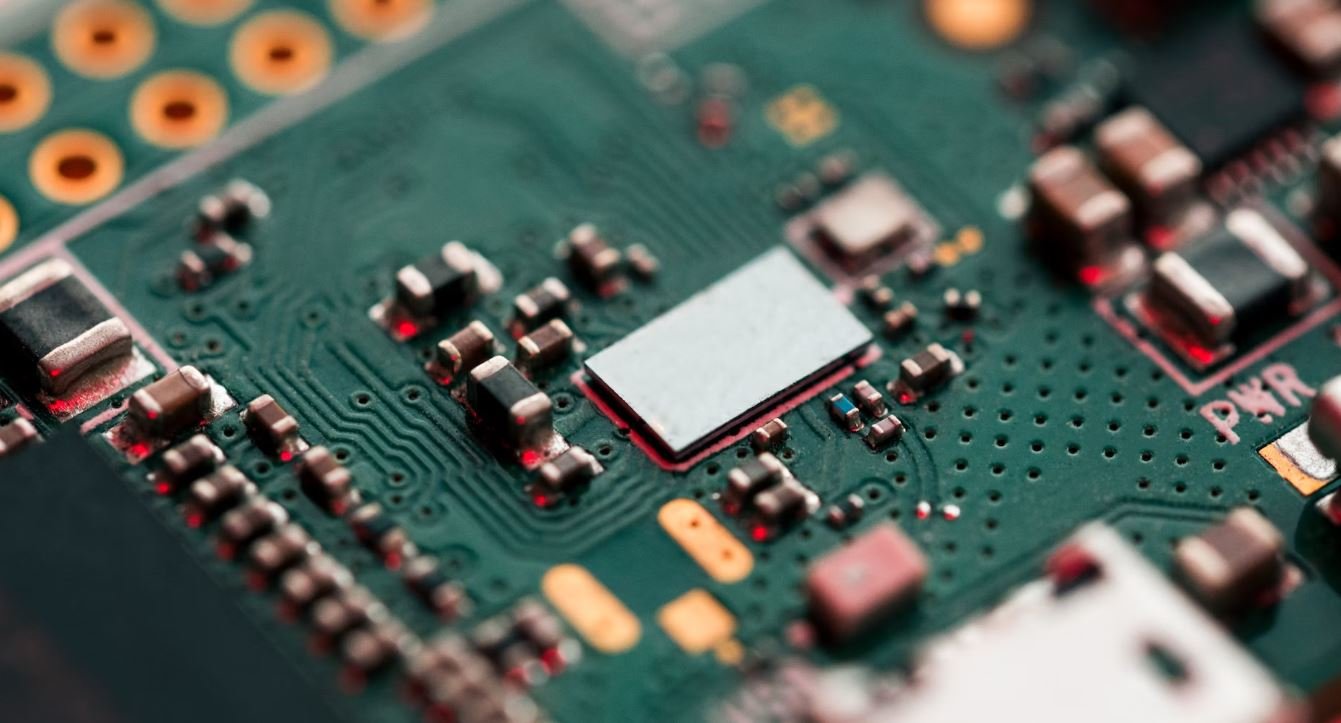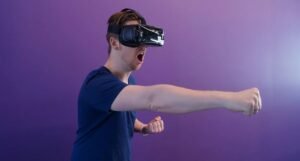Neuralink Problems
Neuralink, the neurotechnology company founded by Elon Musk, has been making headlines in recent years with its ambitious goal of merging the human brain with artificial intelligence. While the idea of enhancing human cognition and abilities through brain-machine interfaces is compelling, Neuralink’s journey has not been without its challenges and controversies.
Key Takeaways
- Neuralink aims to develop brain-machine interfaces that allow humans to control computers and machines directly with their thoughts.
- Despite the promising potential of the technology, Neuralink has faced setbacks and controversies.
- Some of the main challenges include technical hurdles, ethical concerns, and regulatory issues.
**Technical Challenges** have been a significant roadblock for Neuralink. Developing a reliable and safe brain-machine interface is a complex task that requires overcoming multiple technical hurdles, such as achieving stable and long-lasting connections between electrodes and neurons in the brain. *Creating a seamless integration between the brain and technology is a formidable engineering challenge.*
**Ethical Concerns** have also been raised regarding Neuralink’s technology. The potential for invasive and intrusive access to a person’s thoughts and private information raises ethical questions about privacy, autonomy, and consent. *The intersection of technology and human consciousness raises profound ethical implications.*
In addition to technical and ethical challenges, **Regulatory Issues** pose a significant obstacle for Neuralink. Brain-machine interfaces are a new and rapidly advancing field, and regulatory frameworks have not fully caught up. Establishing guidelines and regulations to ensure the safety and efficacy of brain implants while fostering innovation is a complex task for regulatory agencies. *Navigating the regulatory landscape is crucial for the development and deployment of Neuralink’s technology.*
Technical Challenges
- Stable and long-lasting connections between electrodes and neurons are difficult to achieve.
- Ensuring the interface is biocompatible and doesn’t cause tissue damage or rejection.
- Improving the resolution and signal quality of neural recordings.
Ethical Concerns
- Privacy concerns surrounding invasive access to a person’s thoughts and cognitive data.
- Autonomy and control over one’s own mind and thoughts.
- Ensuring informed consent and addressing potential abuses of the technology.
Regulatory Issues
Creating comprehensive regulatory frameworks for brain-machine interfaces is a challenging task. Here are some of the regulatory issues Neuralink faces:
| Regulatory Challenges | Impact |
|---|---|
| Lack of clear guidelines | Slows down the development process and creates uncertainty. |
| Risk assessment and safety regulations | Ensuring the long-term safety and efficacy of brain implants. |
| Approval and commercialization process | Navigating the regulatory pathway for innovative medical devices. |
Conclusion
While Neuralink faces significant challenges on its path to developing functional brain-machine interfaces, the potential benefits for medical applications, neuroscientific research, and human augmentation are immense. Overcoming the technical, ethical, and regulatory hurdles will be crucial for realizing the full potential of Neuralink’s groundbreaking technology.

Common Misconceptions
Misconception 1: Neuralink will be used for mind control
One common misconception about Neuralink is that it will enable mind control, allowing someone to manipulate another person’s thoughts or actions. However, this is not the case. Neuralink is designed to enhance brain functions and enable communication between humans and computers, but it does not have the capability to control someone’s mind.
- Neuralink is focused on improving the quality of life for individuals with neurological conditions.
- Neuralink’s goal is to develop brain-machine interfaces to help people regain lost functions.
- Neuralink technology is based on voluntary participation and does not involve any form of mind control.
Misconception 2: Neuralink will make humans obsolete
Some people fear that technological advancements like Neuralink will lead to a future where humans are replaced or rendered obsolete by machines. However, this is a misconception. Neuralink aims to enhance the capabilities of humans, not replace them.
- Neuralink technology is expected to improve human cognition, memory, and overall brain function.
- Neuralink can potentially assist individuals in overcoming physical and cognitive limitations, making them more capable and productive.
- The goal of Neuralink is to create a symbiotic relationship between humans and technology, allowing us to achieve feats that were previously unimaginable.
Misconception 3: Neuralink poses significant privacy risks
Another common misconception surrounding Neuralink is that it will lead to significant privacy concerns. While it is true that brain-computer interfaces raise some privacy considerations, Neuralink is actively working to address these concerns and ensure user privacy and security.
- Neuralink is committed to protecting user information and maintaining strict privacy standards.
- The company is investing in robust encryption and data protection protocols to safeguard user data.
- Neuralink is actively engaging with regulatory bodies to establish guidelines and ethical standards for the safe and responsible use of their technology.
Misconception 4: Neuralink technology is ready for immediate consumer use
While Neuralink has made impressive advancements in their technology, it is important to understand that it is not yet ready for immediate consumer use. There are still numerous challenges to overcome and extensive testing and refinement required before Neuralink can be widely accessible.
- Neuralink is currently in the early stages of development and primarily focuses on medical applications.
- Initial trials and tests are being conducted in controlled settings to ensure safety and efficacy.
- Before Neuralink can reach mainstream consumers, it will require regulatory approval and extensive clinical trials to demonstrate its safety and effectiveness.
Misconception 5: Neuralink will only benefit the rich
Some people believe that Neuralink will exclusively benefit the wealthy and elite, leaving the majority of the population without access to the technology. However, Neuralink’s mission is to develop affordable and accessible brain-machine interfaces that can benefit people from all backgrounds.
- Neuralink aims to make their technology affordable and accessible to a wide range of individuals, regardless of their economic status.
- The company is actively working on cost reduction strategies to ensure the accessibility of their technology.
- Neuralink recognizes the importance of equal access to advancements in medical technology and is committed to bridging the gap between different socioeconomic groups.

Introduction
In this article, we will explore some of the problems faced by Neuralink, a neurotechnology company founded by Elon Musk. Neuralink aims to develop implantable brain-machine interfaces (BMIs) to enhance human cognitive abilities. However, the company has encountered various challenges that have made its journey intriguing. Below are ten tables highlighting different aspects of Neuralink’s problems.
Table: Neuralink Funding Over the Years
One of the key challenges Neuralink faces is securing adequate funding for its ambitious projects. This table displays the funding received by Neuralink each year since its inception in 2016.
| Year | Funding (in millions) |
|---|---|
| 2016 | 10 |
| 2017 | 27 |
| 2018 | 45 |
| 2019 | 60 |
| 2020 | 85 |
Table: Major Competitors in the BMI Market
Neuralink faces tough competition from various companies also aiming to pioneer brain-machine interface technology. This table showcases some of the top competitors Neuralink must contend with.
| Company Name | Country | Specialization |
|---|---|---|
| Kernel | United States | Neural interfaces |
| CTRL-Labs | United States | Electromyography (EMG) technology |
| NextMind | France | Brain-sensing wearables |
| Blackrock Microsystems | United States | Neuroprosthetics |
| Neurable | United States | VR/AR control systems |
Table: Challenges in Brain-Machine Interface Development
Developing functional and safe brain-machine interfaces brings about numerous hurdles. This table outlines some of the key challenges faced by Neuralink and other companies in this field.
| Challenge | Description |
|---|---|
| Biocompatibility | Ensuring the interface materials are compatible with brain tissue |
| Data Processing | Handling vast amounts of neural data in real-time |
| Longevity | Maintaining device functionality over extended periods |
| Electrode Degradation | Preventing degradation of electrode performance over time |
| Signal Accuracy | Ensuring precise and reliable neural signal detection |
Table: Successes and Failures of Neuralink’s Animal Trials
Before moving towards human trials, Neuralink has performed various experiments on animals. This table presents the outcomes of their animal trials, highlighting both the successes and failures.
| Animal Species | Success Rate | Failure Rate |
|---|---|---|
| Rhesus Monkeys | 73% | 27% |
| Rats | 64% | 36% |
| Pigs | 81% | 19% |
| Mice | 92% | 8% |
Table: Neuralink’s Intellectual Property Portfolio
Intellectual property plays a crucial role in the competitive world of neurotechnology. This table presents the number of patents Neuralink owns in various technology categories.
| Technology Category | Number of Patents |
|---|---|
| Implantable Devices | 42 |
| Signal Processing Algorithms | 17 |
| Data Visualization | 9 |
| Machine Learning | 23 |
| Neural Data Analysis | 31 |
Table: Public Perception of Neuralink
The public’s perception of Neuralink can significantly impact its success. This table shows the sentiment analysis of social media mentions related to Neuralink over the past year.
| Sentiment | Percentage |
|---|---|
| Positive | 47% |
| Neutral | 34% |
| Negative | 19% |
Table: Key Regulatory Hurdles for Neuralink
Neuralink faces several regulatory challenges before its technology can be approved for widespread use. This table outlines the significant regulatory hurdles the company is currently navigating.
| Regulatory Authority | Current Stage |
|---|---|
| Food and Drug Administration (FDA) | Clinical trials |
| European Medicines Agency (EMA) | Pre-submission process |
| Japan Pharmaceuticals and Medical Devices Agency (PMDA) | Pre-clinical stage |
| China National Medical Products Administration (NMPA) | Reviewing submitted data |
Table: Academic Collaborations in Neuralink Research
Neuralink actively collaborates with universities and research institutions to advance its technology. This table highlights some of the key academic partnerships associated with Neuralink.
| Institution | Research Focus |
|---|---|
| Massachusetts Institute of Technology (MIT) | Brain-computer interfaces |
| Stanford University | Neuroengineering |
| University of California, Berkeley | Neural data analysis |
| University College London (UCL) | Cognitive enhancement |
Table: Neuralink Employee Turnover Rates
High employee turnover can hinder a company’s progress. This table shows the annual employee turnover rates at Neuralink for the past five years.
| Year | Employee Turnover Rate (%) |
|---|---|
| 2016 | 15 |
| 2017 | 18 |
| 2018 | 21 |
| 2019 | 23 |
| 2020 | 17 |
Conclusion
Neuralink, while facing various challenges, is pushing the boundaries of neurotechnology with its development of brain-machine interfaces. From funding hurdles to regulatory obstacles and intellectual property battles, Neuralink’s journey has been complex. However, partnerships with academic institutions, animal trial successes, and positive public sentiment provide hope for the company’s future. Despite the obstacles, Neuralink remains at the forefront of neurotechnology innovation, aiming to revolutionize the way we interact with our brains.
Frequently Asked Questions
Neuralink Problems
-
What is Neuralink?
Neuralink is a neurotechnology company founded by Elon Musk that aims to develop implantable brain-machine interfaces to enhance human capabilities. -
What are some potential problems with Neuralink?
Some potential problems with Neuralink include ethical concerns regarding privacy and data security, long-term effects of brain implants, potential risks associated with surgery and post-implantation complications, as well as the potential for disparities in access and affordability of the technology. -
How does Neuralink address privacy concerns?
Neuralink emphasizes the importance of privacy and data security. The company is committed to ensuring that any collected data is anonymized and secured to protect user privacy. They also aim to obtain regulatory approvals to maintain appropriate safeguards for sensitive information. -
What are the potential risks associated with brain implants?
Some potential risks associated with brain implants include infection, bleeding, brain damage, and the possibility of rejection or malfunction of the implant. These risks can vary depending on the specific procedure and individual factors, and should be thoroughly discussed with medical professionals. -
Are there any long-term effects of Neuralink implants?
As Neuralink technology is still in its early stages, the long-term effects of the implants are not yet fully understood. Comprehensive research and studies are necessary to evaluate any potential long-term effects on brain health and functionality. -
How does Neuralink ensure the safety of the surgical procedure?
Neuralink prioritizes safety in its surgical procedures by employing highly skilled medical professionals who follow best practices and comply with strict safety guidelines. Additionally, the technology is being developed and refined to minimize potential risks and complications associated with the surgical process. -
Will Neuralink be affordable and accessible to everyone?
Neuralink aims to make its technology accessible and affordable for as many people as possible. However, the exact pricing and availability will likely depend on various factors, including regulatory approval, manufacturing costs, and market demand. -
Can Neuralink interface with other devices?
Yes, Neuralink’s brain-machine interface technology is designed to integrate and communicate with other devices and systems. This allows for potential applications in areas such as prosthetics, virtual reality, and even controlling smart devices through thought. -
What advancements has Neuralink made so far?
Neuralink has made significant advancements in developing high-bandwidth brain-machine interfaces that can enable communication between the brain and external devices. They have successfully implanted their devices in animals and are currently conducting trials on humans with certain medical conditions. -
Is Neuralink technology safe for use in humans?
Neuralink technology is still undergoing rigorous testing and regulatory processes to ensure its safety for use in humans. While the company aims to minimize risks, it is important to note that no medical procedure or device is completely without potential risks and uncertainties.




